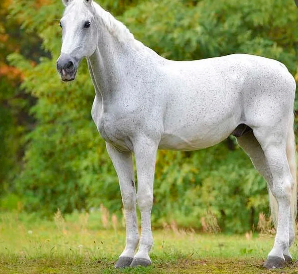How To Care For A Horse

Have you ever wondered how to care for a horse? Well, this is the article for you. Horses require a lot of care and attention in many different ways. This article will detail the do’s and don’ts of horse care, riding, and general ownership.
Diet And Exercise
Horses, just like humans, need a nutritious diet in order to feel and perform their best. Horses need all sorts of vitamins and other supplements that they don’t get enough of naturally. They also need energy-giving grain and lots and lots of hay. Horses’ diets change with age as well. Older horses will need higher fat grain and supplements to help them keep a healthy weight. Young horses need lots of vitamins to help their growing minds and bodies. You never want to underfeed hay, as it is roughage and helps with their digestive health, and helps prevent colic.
In order to maintain muscle and a healthy weight, horses should be worked regularly. This can be riding, or another form of work that engages the horse’s muscles. Just like people if horses eat and eat without any form of exercise, they will quickly become overweight and unhealthy. This can lead to health issues with their hooves, digestive health, and heart health. A healthy horse can be ridden and worked consistently into their twenties, but even retired horses should have some form of exercise periodically.
Grooming And Tack
Grooming is a great way to bond with a horse if done safely and properly. Keeping your horse clean is important for their skin and coat health. There are many kinds of brushes that you should use for your horse. The curry is a coarse brush that is used to get up caked on dirt, hair, or other grime. Use circular motions and the dirt will be much easier to get off. The hard brush or flick brush is used to brush off all the dirt and hair you got up with the curry. The hard brush has stiff bristles. The soft brush or finishing brush is used to smooth down all the hair and get your horse looking nice and shiny. A hoof pick is used to pick dirt and rocks out of the horse’s feet. This is very important because it could cause your horse pain if rocks are left in their feet.
Tack, such as your saddle, bridle, and more, and the way it fits, is vital to a well-behaved horse. Ill-fitting tack can cause discomfort and pain which when riding can be a recipe for disaster. A comfortable, non-irritating saddle pad is the first step. It should properly hug your horse’s back, and cushion the saddle. It should not rub or create friction burns on your horse’s back. Next is the saddle. It should be the right length for your horse’s back, not too heavy and it shouldn’t come up in the back or pinch the horse. The bridle is definitely the most complex piece of tack you need. There are many different types of bridles, but this article will cover bridles with bits. The bit is a metal piece that goes in your horse’s mouth. There are many different bits, so picking the right one for you and your horse is a process. The bit should fit comfortably in the horse’s mouth, and the bridle should hold it in place but not pull on the mouth. The general rule is two small wrinkles in the corner of the horse’s mouth means the bit fits properly. The reins are attached to the bit, so be sure they are properly attached and will not come off. Some horses wear boots to support their tendons and protect their legs while riding. If you are using boots, make sure they are tight on your horse’s leg and will not slide or cause rubs.
Cost
It’s no lie that horses are expensive. They have many needs and none of them are cheap. Always take budget into consideration before thinking about owning a horse. Horses vary in price. Better trained and bred horses will cost more, but if that is not important you can find an affordable horse. Tack is expensive, especially if it is fit to your horse. Horses also need to have their feet trimmed every four to six weeks. These farrier visits can cost anywhere from one hundred dollars to two hundred dollars. God forbid you need to call the vet out, be prepared for a hefty bill. Depending on the severity of your situation, the bill can vary greatly. The average board for a horse in New York is eight hundred dollars, but it can get even higher than that. Finding a budget that works for you is definitely the most challenging aspect of horse ownership.
I hope you found this article helpful and gave some perspective on horse ownership. It is a daunting task but it is so very worth it in the end. If you take proper care of your horse you will have an unbreakable bond in no time!











